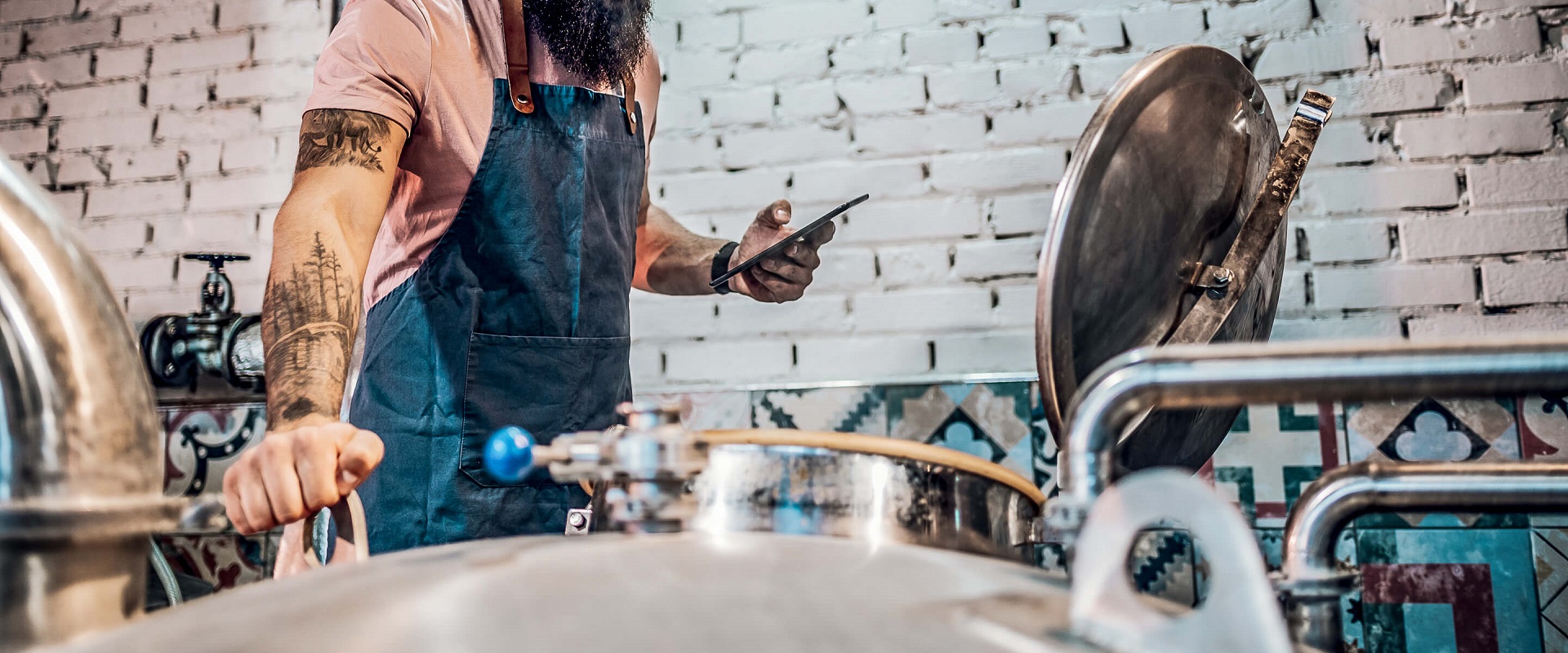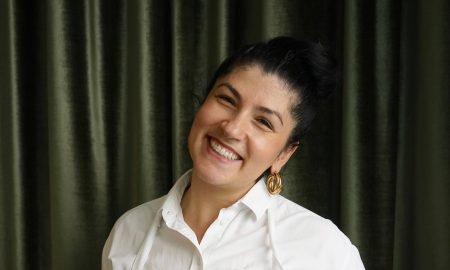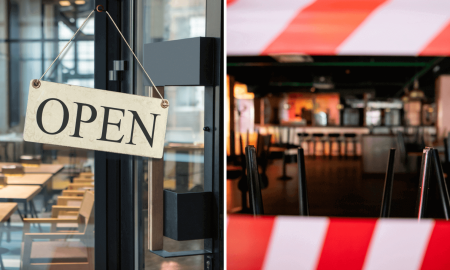Some say culinary revolutions begin in star restaurants. Heinz Reitbauer, for example. According to the Steirereck mastermind, “Top chefs provide the catalyst for new products. We set an example for what will be eaten in our country in the future.” However, others say this simply isn’t true. In fact, top gastronomy is a world in itself. David Zilber is one of them. “What is eaten in fine-dining restaurants is just a tiny percentage of what people around the world eat,” he says. And Zilber knows it at least as well as Reitbauer – he cooked at the world’s best restaurants for 15 years.

Image: Raphael Gabauer
Star-class fermentation
The Canadian native gained cult status as head of fermentation at René Redzepi’s Noma. Copenhagen’s culinary mecca is considered by many to be the best restaurant in the world. Ranked number one several times on the prestigious World’s 50 Best Restaurants list, it has now recently been awarded three Michelin stars, to name just two of its most prestigious accolades. For four years, Zilber headed the fermentation laboratory there, which was built especially for him. His job: Working on fermentation techniques for new dishes until they were good enough to be tried out in the Noma test kitchen.
Sieh dir diesen Beitrag auf Instagram an
“This could be a new type of vinegar, or a kombucha made from microbes that we had not heard of before,” explains the 37-year-old. “There were no limits to our creativity, because it could get very wild and experimental. We never really knew what the end results would be. It just had to taste good.” Sounds like the perfect playground for a microbe-obsessed kitchen nerd, right?
Making the food system more sustainable with bacteria
“It was definitely a very educational period,” he says. However, he adds, “It was also very strenuous. And then came Corona.” For Zilber, this was a time when he suddenly had second thoughts. How long would this all last? When would he be allowed to tinker around in his lab again? And was the Noma ivory tower actually still the right place for him? “During that time, I realized I can’t bring about that level of social change in a restaurant that I would like to see in terms of diet and nutrition.”
Zilber compares his role as Mister Fermentation at Noma to that of a punk rocker rebelling against the establishment. “Now I see you can do much more by transforming this system from the inside.” That’s exactly what Zilber has been doing at Chr. Hansen as a food scientist since the fall of 2020. But how?
The slightly different database
Hansen is a Danish biotech company based in Høsholm. It is one of the largest developers of food cultures and enzymes, which it supplies to large food groups, including Unilever and CocaCola. In turn, these companies use them to make their products.
“About one and a half billion people eat products containing Chr. Hansen cultures every day,” says Zilber. “This includes everything from beer to salami, wine, bread and fermented vegetables.” The top sellers are fermented dairy products, mainly yogurt and cheese.
“The company has a collection of over 40,000 bacteria that can be used for food. This is by far one of the largest collections in the world.” It’s exactly here where Zilber and his fermentation skills come into play. In his new in-house laboratory, he and a team of high-profile scientists are working with some of these 40,000 bacteria. How can they best be used to produce plant-based products that could make global diets healthier and more sustainable?
“Our food production is not sustainable,” says Zilber. “Too much is thrown away. Most products leave far too much of an ecological footprint. Agricultural yields are shrinking. We eat too much meat. And only a handful of groups control the entire food industry.” Zilber’s goal: “Making vegetables as darn tasty as they can be, and doing so with the help of bacteria.” But what exactly makes fermentation so promising? Why is it healthier? And why so sustainable?
Sieh dir diesen Beitrag auf Instagram an
Microbes as best sellers
Fermentation is one of mankind’s oldest cultural techniques. We assume it has been used to preserve perishable foods at least since the agricultural revolution some 13,000 years ago. In the 19th century, one of the earliest theoreticians of this ancient process, Louis Pasteur, referred to it as “life without air.” The image of canning jars, in which processes known as “controlled fermentation” take place, has shaped our conception of fermented foods ever since.
However, a lot has happened in the last few years. Today, the term fermentation means “transformation of food by microorganisms – whether bacteria, yeasts or molds”. At least that’s what it says in the fermentation bible in “The Noma Guide to Fermentation,” published in 2019 by David Zilber together with René Redzepi. The book became a bestseller. Today you can find it in every serious restaurant kitchen, and it is regarded as a gastronomic standard. In it, Zilber passes on the knowledge he has acquired over the years about fermenting the modern way. Porcini juice, grasshopper garum, elderberry wine – fermentation suddenly became hip with creations like these.
Sieh dir diesen Beitrag auf Instagram an
Lack of air? As if! At the intersection of science, craft and art, Zilber’s book shows how important humidity levels are when it comes to standard recipes like soy sauces or vinegars. They are stirred, tasted, and air is let in and then released again. “Today I would say that I really made a difference with the book, even outside the four walls of Noma,” says Zilber. But why has a book about fermentation become a global bestseller at this particular time in history? “I have a very simple theory about this: it may be the last truly analog pursuit in the world,” Zilber replies. Literally. While ever-present screens make everything and everyone accessible, fermentation is a thoroughly organic endeavor. The clock ticks differently. What does that mean?
Is pasteurization a phase-out model?
Bacteria are the key players in fermentation. The simplest way to explain its effect is to use sauerkraut as an example. The bacteria are already on the raw cabbage. By adding salt and shielding it from oxygen, you can prevent bacteria humans can’t eat from multiplying. If these steps were not taken, the bacteria would spoil the cabbage, not ferment it.

Image: AdobeStock | Zamrznuti tonovi
The “good” bacteria, on the other hand, get to work gobbling up the sugars and starches in the cabbage. They produce what are called lactic acids. This gives the sauerkraut its characteristic sour flavor and ensure it keeps for a long time. They also release a vast amount of substances that are invaluable to humans, such as Vitamin C, B 2, B 12 and folic acid, as well as probiotics. These are bacteria that are particularly beneficial to our intestinal flora. And since they are in charge of around 60 to 80 percent of our immune system, the bacteria resulting from fermentation can positively impact the majority of immune responses in the human body.
But here’s the catch: Many industrially produced fermented products, including sauerkraut, are pasteurized. This means they are briefly heated to up to around 161 degrees Fahrenheit to increase their shelf life. However, there’s definitely a downside. First, this means the product loses a lot of vitamins and probiotics. And second, pasteurization still results in too short a shelf life. In the EU alone, around 20 percent of all yogurts are thrown away – most because they have passed their best before date. “The right bacteria, used correctly, could help us significantly prolong the shelf life of many foods, ideally without any pasteurization at all,” Zilber says. “And then of course it’s also about taste. It all has to come together.”
Canned revolution – fermentation is just getting started
Zilber is already tinkering with the very first products. “I’ve been working on tempeh for a long time,” he says. “With the help of several combined lactic acid bacteria, we’ve transformed what many consider the somewhat earthy, tart flavor of this product into something much more pared-down and appealing, which gives it a flavor similar to soybean. We are also well on the way to bringing valuable vitamin B 12 to tempeh in sufficient quantities. This vitamin is otherwise predominantly found in animal products. Plant-based products will have to catch up.
Sieh dir diesen Beitrag auf Instagram an
“Then there’s the canned tomato sauce. With the help of a single lactic acid bacterium, the right temperature and a sufficiently long fermentation time – the exact details are of course top secret – this tomato sauce takes on an amazingly savory flavor reminiscent of aged Parmesan. “If we could manage to produce this tomato sauce in large quantities, millions of people would be eating a tastier tomato sauce full of probiotics on their pizza or in their pasta overnight, and a healthier one at that.”
Speaking of pizza, Zilber is also currently tinkering with a plant-based salami. “Those typical deep, salty flavors can all be achieved without any meat at all by using the right fermentation method,” says Zilber. How long will it take to achieve a satisfactory result? Zilber doesn’t want to be pinned down. “Don’t forget,” he points out, “we still have no idea how many bacteria are on our planet. We assume at least one trillion. Of these, an estimated one percent can be cultivated for fermentation purposes. So we are just at the beginning.”
- Born in 1985, David Zilber began a culinary apprenticeship in his hometown of Toronto at 18. On the side, he regularly attended science lectures at university.
- After several stints in the world of top gastronomy: Zilber was, among other things, sous chef at the famous Hawksworth restaurant. In 2014, he joined the kitchen crew at Noma in Copenhagen.
- Two years later, René Redzepi appointed him Head of Fermentation. In his own laboratory, Zilber and several collaborators researched fermentation techniques that would play a major role in shaping Noma’s culinary line.
- David Zilber has been a Food Scientist at the Danish biotechnology company Chr. Hansen since mid-2020.














